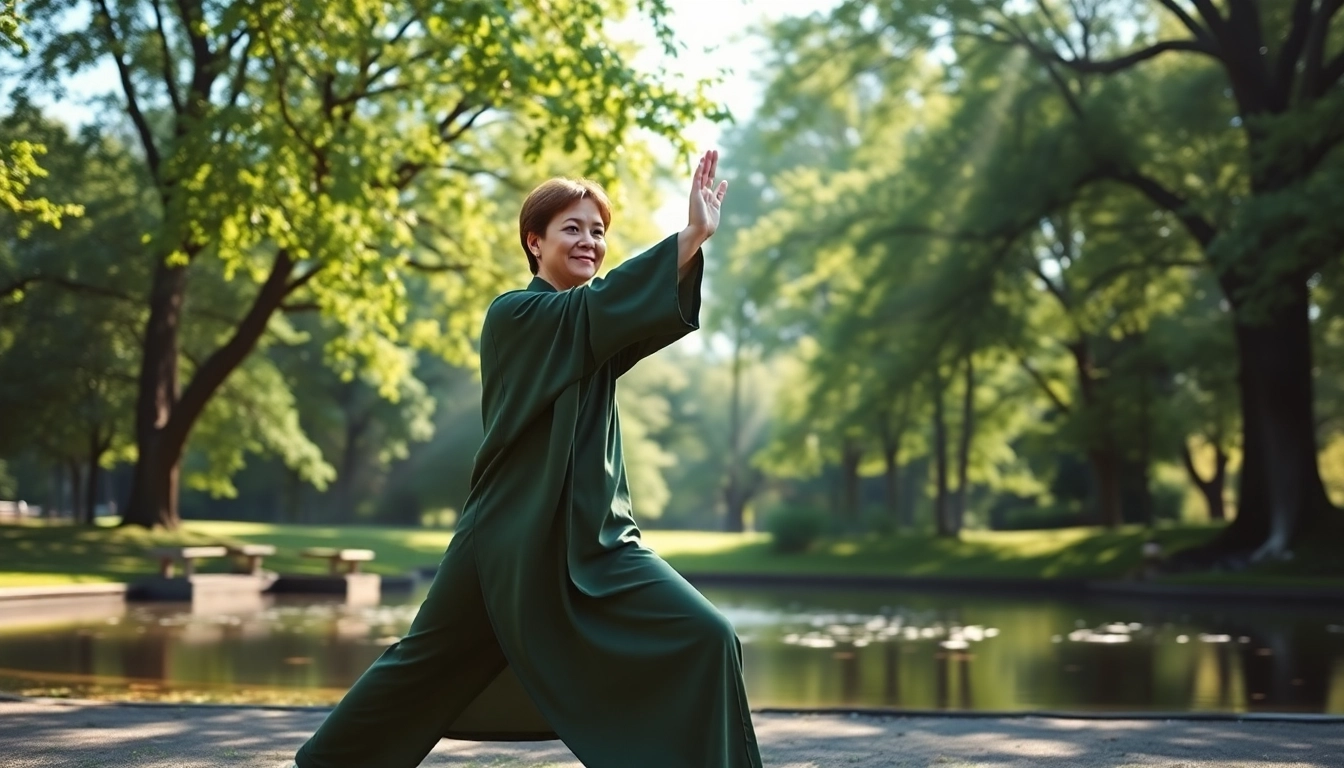Enhancing Wellness Through Tai Chi with Angie Sierra’s Expert Guidance
Understanding the Basics of Tai Chi
The Philosophy Behind Tai Chi
Tai Chi, often described as “meditation in motion,” originates from centuries of traditional Chinese philosophy and martial arts. This ancient practice harmonizes the body and mind, utilizing a series of slow, deliberate movements that are grounded in concepts of balance, flow, and tranquility. Its roots can be traced back to Taoism, which emphasizes the interconnectedness of life forces and the importance of maintaining equilibrium. The central tenet is that through Tai Chi, individuals can cultivate inner peace and physical well-being, allowing energy to flow freely through the body—a practice known as “Qi” or “Chi.”
Core Principles of Movements
The movements of Tai Chi are characterized by their fluidity and grace. Each sequence is meticulously crafted to enhance physical capabilities while also promoting mental clarity. The two primary principles governing these movements are:
- Softness Over Hardness: Tai Chi emphasizes yielding and overcoming force through softness and adaptability. This principle teaches practitioners to respond to challenges with grace rather than resistance, fostering resilience.
- Awareness of Breath: The synchronization of breath with movement is vital in Tai Chi. Practitioners learn to inhale and exhale in harmony with their motions, enhancing focus and grounding their experience.
Health Benefits of Practicing Tai Chi
The practice of Tai Chi is not merely a form of exercise; it is a holistic approach to health. Numerous studies have highlighted the wide-ranging benefits of this gentle practice, including:
- Improved balance and coordination, significantly reducing the risk of falls, particularly in older adults.
- Increased flexibility and muscle strength, contributing to better mobility and endurance.
- Enhanced mental health, alleviating symptoms of anxiety and depression through mindfulness techniques.
- Improved cardiovascular health, aiding in lower blood pressure and increased circulation.
Get Started with Tai Chi
Finding the Right Class with Angie Sierra
If you are intrigued by the benefits of Tai Chi and wish to explore this journey, finding the right instructor is essential. Angie Sierra offers tailored classes that accommodate different skill levels, from novices to advanced practitioners. Each session is designed with an emphasis on personal growth and understanding, ensuring that every participant feels supported in their practice.
Essential Gear and Preparation
Preparing for your Tai Chi practice requires minimal equipment, making it accessible for everyone. Here are a few essentials:
- Comfortable Clothing: Opt for loose-fitting attire that allows for freedom of movement. Natural fabrics are often preferred for their breathability.
- Proper Footwear: Flat shoes with good grip are ideal. Some practitioners prefer specialized Tai Chi shoes for optimal stability.
- An Open Space: Whether indoors or outdoors, find a space that allows for safe, unrestricted movement.
Starting Your First Session
As you embark on your Tai Chi journey, approach your first class with an open mind. Focus on the following:
- Observe the movements closely and follow along as best as you can.
- Prioritize relaxation and let go of any self-judgment or expectations.
- Engage in active listening to the instructions provided by your instructor.
Developing Your Tai Chi Practice
Intermediate Techniques with Angie Sierra
Once you have grasped the basics, exploring intermediate techniques will deepen your practice. Angie Sierra’s classes introduce movements that focus on enhancing fluidity and strength. These techniques often include:
- Single Whip: A foundational posture that cultivates a sense of flow and integration.
- Cloud Hands: A movement emphasizing lateral motion and gentle strength, enhancing coordination.
Key Exercises to Master
As you progress, specific exercises will aid in mastering your Tai Chi practice. Focus on:
- Stance Training: Practicing in different stances can enhance stability and strength.
- Wave Hands Like Clouds: This exercise improves coordination and balance, as well as fostering a sense of relaxation.
Establishing a Routine
Consistency is vital in developing your Tai Chi skills. Here’s how to establish a beneficial routine:
- Dedicate specific days and times for practice.
- Incorporate a mix of technique work and mindfulness exercises.
- Reflect on your progress and be patient with yourself as you develop.
The Role of Mindfulness in Tai Chi
Integrating Meditation and Breathwork
Mindfulness serves as the backbone of Tai Chi, allowing practitioners to cultivate a deeper connection with their movements. Integrating breathwork and meditation offers a more fulfilling experience:
- Breath Awareness: Focus on deep belly breathing, allowing the breath to guide your movements.
- Visualization Techniques: Picture your movements flowing like water, fostering a deeper internal experience.
Enhancing Focus and Concentration
The slow, intentional movements of Tai Chi naturally enhance focus and concentration. To further improve these qualities:
- Limit distractions in your practice environment.
- Engage in guided meditations that emphasize grounding and awareness.
Connecting Body and Mind
One of Tai Chi’s profound benefits is its ability to bridge the gap between physical movement and mental clarity. As you practice, notice:
- The sensations in your body as you perform each movement.
- Your emotional responses to the practice, fostering greater self-awareness.
Measuring Progress in Your Tai Chi Journey
Setting Personal Goals with Angie Sierra
Setting achievable goals is integral to your growth in Tai Chi. With Angie Sierra’s guidance, consider establishing the following types of goals:
- Technical Goals: Focus on mastering specific forms or techniques within a set timeframe.
- Mindfulness Goals: Aim to deepen your understanding of breath and meditation practices.
Tracking Your Improvement
Keeping track of your development can be motivating. Here are ways to measure your progress:
- Maintain a practice journal, documenting your sessions and insights.
- Engage in self-assessments, noting improvements in balance, coordination, and mindfulness.
Celebrating Milestones and Achievements
Recognizing your achievements is vital for sustaining motivation. Celebrate milestones by:
- Reflecting on how far you’ve come since starting.
- Sharing your experiences with others, fostering community and support.














Post Comment